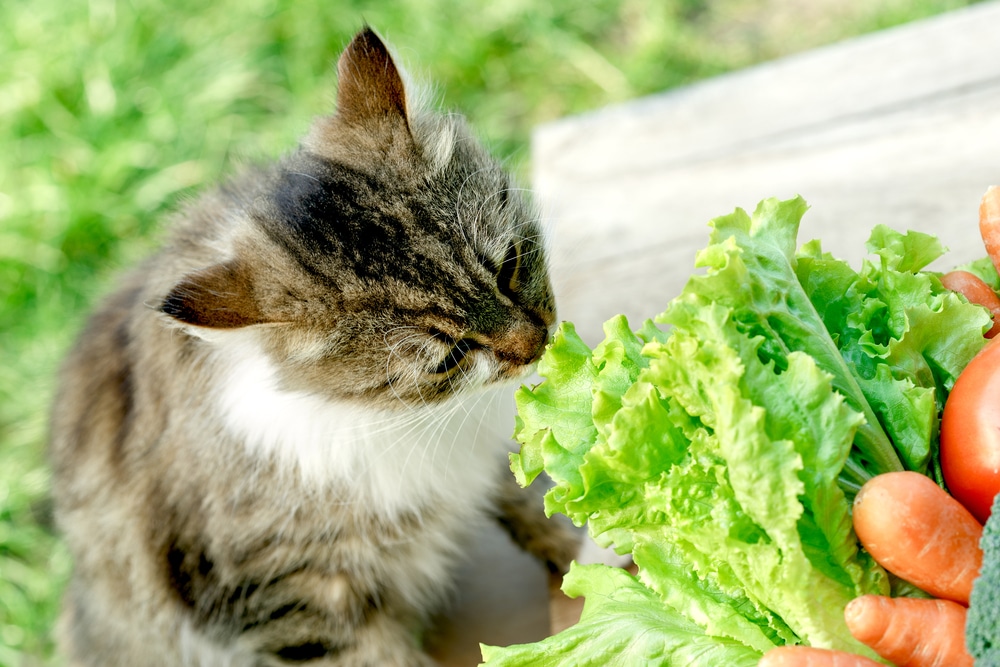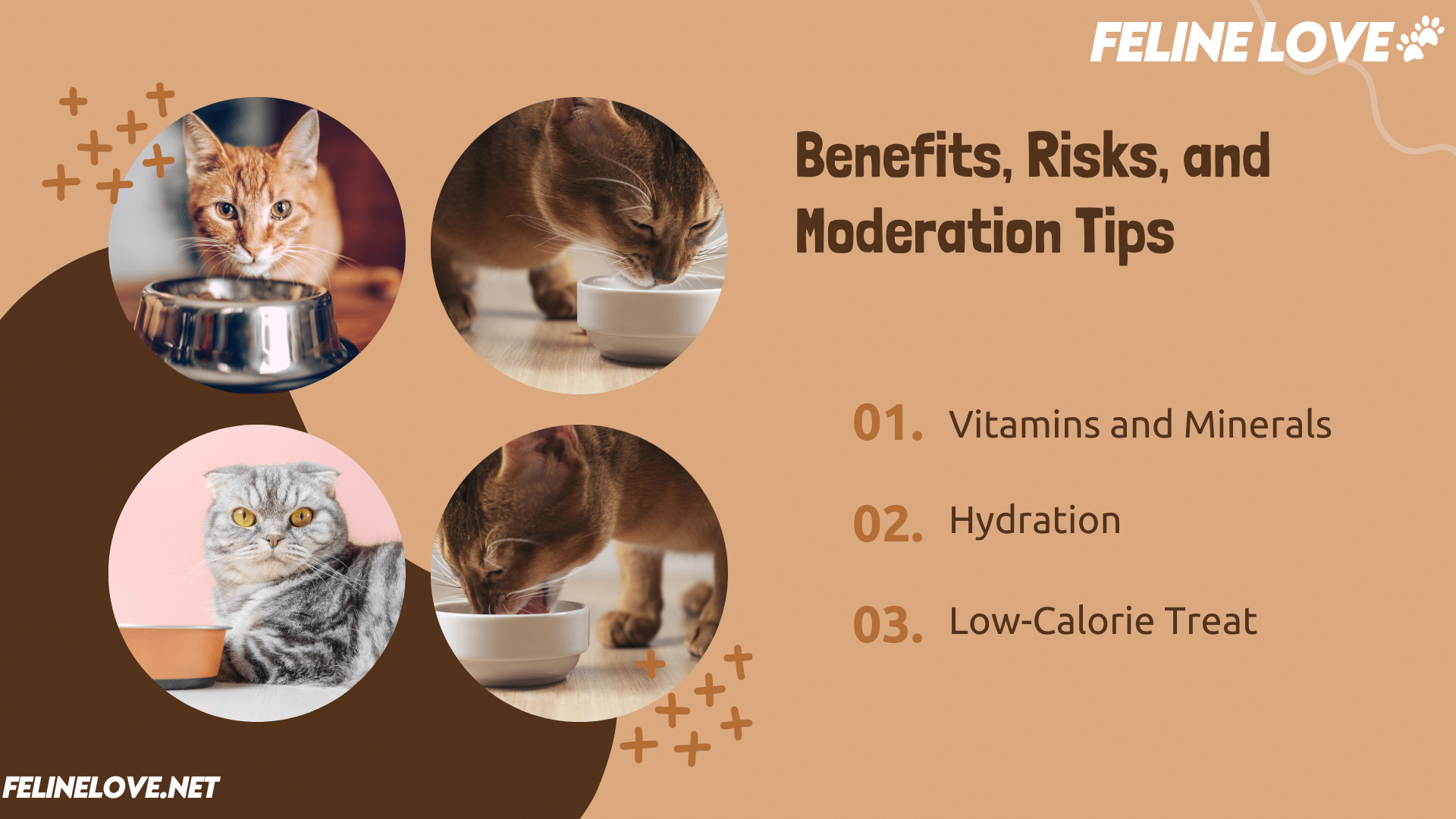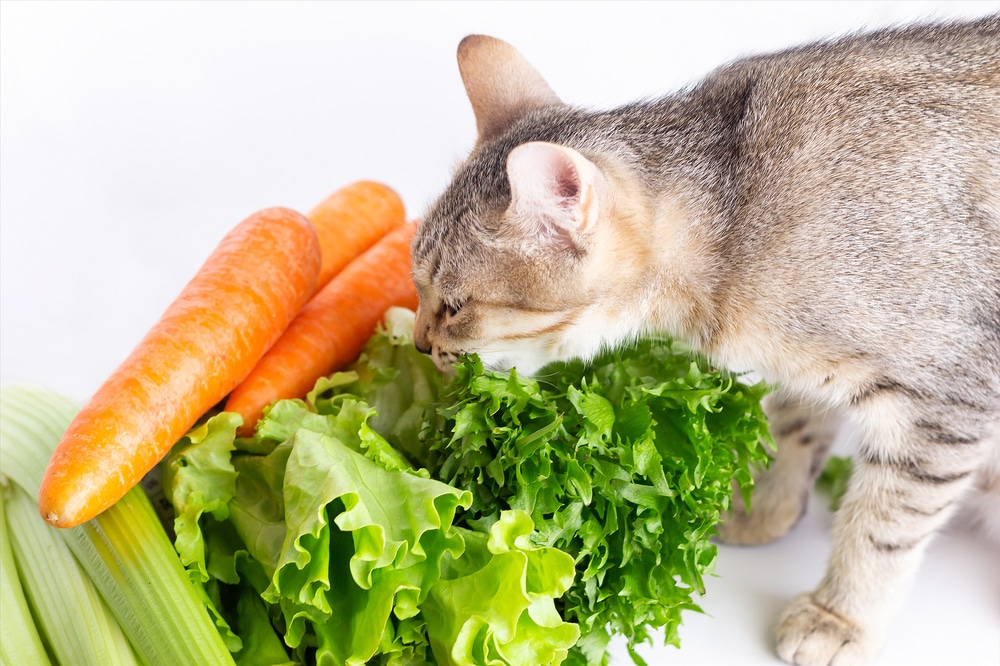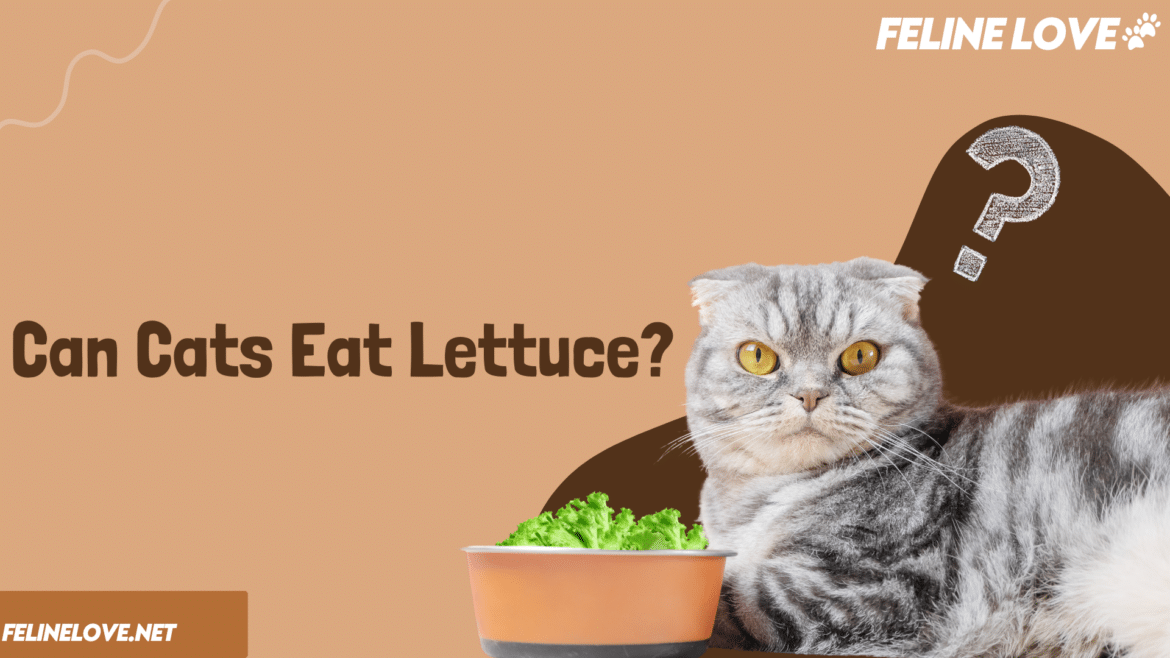Table of Contents
Cats have an uncanny ability to brighten even the dullest days with their playful antics and loving purrs. However, as pet owners, one of the most challenging aspects of their care is ensuring a proper diet. Choosing the right food for your feline friend often leaves you questioning what’s safe and healthy versus what’s not. You find yourself endlessly researching, trying to determine whether a particular food is suitable for your cat’s diet and health. One common query that pops up time and time again is: Can cats eat lettuce? It’s a valid concern for pet parents who want to offer their furry companions something green and healthy. To help you navigate this question, we’ve carefully compiled answers for cat owners curious about whether lettuce is a safe addition to their pet’s diet. So, let’s dive into the world of veggies and uncover the truths about giving lettuce and other greens to your feline friend.
Cats and Their Diet – Understanding the Basics
Before delving into the topic, it’s essential to understand that cats are obligate carnivores, meaning their primary diet revolves around meat. Their bodies are specially designed to extract nutrients from animal proteins. However, some human foods, like lettuce, can occasionally be safe in moderation and even provide certain health benefits.
Is Lettuce Safe for Cats?

The short answer is yes, lettuce is safe for cats to eat in small amounts, provided it’s plain and free from dressings or harmful additives. Offering your feline friend a little lettuce as a treat can be fine, but it should never replace their regular cat foods.
That said, the safety of lettuce depends on the type of lettuce you choose. Here’s a breakdown:
Romaine Lettuce
Considered the best option for cats, romaine lettuce contains more nutrients than other varieties. It’s packed with vitamins and minerals that can offer minor health benefits for your cat’s diet.
Iceberg Lettuce
While iceberg lettuce is safe, it’s not particularly good for cats. It consists mostly of water and lacks significant nutritional value. Feeding your cat large amounts of iceberg lettuce may cause digestive upset due to its high water content.
Other Leafy Greens
Darker leafy green lettuces, like arugula or spinach, can be safe but should be given sparingly. Always check for toxic ingredients or pesticides before offering them to your cat.
Benefits, Risks, and Moderation Tips

The nutritional value of lettuce makes it a neutral addition to your cat’s diet. While it’s not inherently bad for cats, it’s also not a food that offers substantial benefits. Some advantages of giving lettuce to your feline friend in moderation include:
Vitamins and Minerals: Lettuce contains small amounts of vitamins A and K, which can support overall health.
Hydration: The high water content in lettuce can help keep your cat hydrated, especially during warmer months.
Low-Calorie Treat: For cats that need to lose weight, lettuce can be a light and guilt-free snack.
However, the lack of protein in lettuce means it should remain a minor supplement rather than a dietary staple. Remember, too much lettuce isn’t good for cats, as it can lead to digestive discomfort.
How to Safely Feed Lettuce to Your Cat

If you’re ready to let your cat try lettuce, follow these steps to ensure it’s safe:
Choose the Right Type of Lettuce: Stick to varieties like romaine lettuce or other leafy greens that aren’t overly processed or sprayed with chemicals.
Wash Thoroughly: Always wash lettuce to remove any pesticides or contaminants.
Offer in Small Amounts: Only feed your cat a few small pieces of lettuce at a time. Too much can cause diarrhea or an upset stomach.
Monitor Your Cat: After introducing lettuce, watch for any signs of allergic reactions or digestive upset.
By following these steps, you can safely offer lettuce to your feline friend without causing harm.
Conclusion
So wrapping up all the queries about, can cats eat lettuce? Yes, they can, but only in moderation. Lettuce, particularly romaine lettuce, can provide minor health benefits like hydration and a small boost of vitamins and minerals. However, it should never replace the essential nutrients provided by high-quality cat foods.
When you decide to feed your cat lettuce, ensure it’s plain, clean, and served in small amounts. Avoid varieties like iceberg lettuce that offer little nutritional value. While lettuce isn’t a necessary part of a cat’s diet, a little taste now and then can be a safe and enjoyable treat for your feline friend.
By understanding what’s safe for your cats, you can make informed decisions about incorporating human foods into their diet. Lettuce can be an occasional, harmless indulgence—but remember, your cat’s health always comes first!

